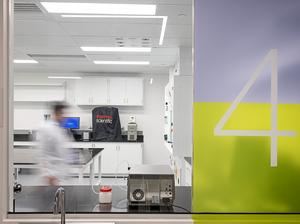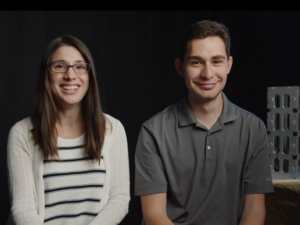Back in 2012, Bounce Imaging unveiled a prototype for the Explorer: a softball-sized throwable camera that could almost instantly transmit 360-degree images to a mobile device when tossed into a hidden areas, like a hostage situation, burning building or the rubble of an earthquake. The idea was originally conceived with first responders’ safety in mind, but it quickly became clear that there was immense value for giving police personnel an idea of what they may face in potentially dangerous situations. Now, three years later, the Boston startup is in the process of shipping out the first batch of 100 Explorers, which will be tested out by the Revere/North Metro SWAT team and the Maine Department of Corrections, among other departments.
Founder Francisco Aguilar, a Harvard and MIT Sloan alum, says this initial run is aimed at gathering user feedback for future iterations.
“We’re doing a very limited run this first time around because it’s a very reputation-heavy space,” he told BostInno. “We want to make sure that everyone’s really happy before we scale up.”
Over the past couple years, the startup–which is based at the Harvard Launch Lab—has been tweaking the Explorer. That included doubling the power on the LEDs and a significant enhancement of the interface. In addition, Aguilar says they “ruggedized it” further.
“We did a lot of things that seem trivial, but were actually huge changes,” he added.
Maximum visibility in multiple scenarios
The device, which retails for $1,495 for the regular version, contains a camera that includes six lenses surrounded by LED lights. Each of those lenses can snap several photos per second at the same time. The raw images are then stitched together in a fraction of a second to form panoramic photos, and then uploaded straight to the user’s smartphone. One of the most crucial aspects of the Explorer, Aguilar says, is that it serves as its own wireless hotspot—something that’s beneficial when an officer is in a tunnel or a cave with no signal.
And the use cases for this technology are not just limited to security and law enforcement. One of the key improvements that Bounce Imaging made was to the stitching capabilities. Aguilar told BostInno that the team has some prototypes in place for using that image stitching to create a 360-degree camera on a consumer’s phone.
“That kind of content is usually generated by expensive cameras that either have to go to the cloud or require a lot of offline computation,” he explained. “But the tech we’re developing for the Explorer allows people to do that stitching on the fly, on a laptop or a phone faster than traditional methods.”
Aguilar noted that Bounce could end up pitching the technology to VR content creators in the future—especially considering the potential for that image stitching when it comes to drones, video games and movies.
“Imagine a GoPro camera that’s looking in all directions when you’re surfing or skating,” added Aguilar. “There are some products out there like it, but they won’t be truly omni-directional—they’ll use a mirror so you can only look at a certain orientation. If you’re a skateboarder doing a crazy loop—you don’t want to see a black bar across the top of the screen as you’re going over the top. With this, you wouldn’t have to.”
Thus far, Bounce Imaging has raised about $1.75 million in funding—most recently closing a round in March from MIT Alumni Angel Investors Group of Northern California and Maine Angels. But Aguilar noted that the company is continually fundraising to support growth. Bounce has seven people on its core team, along with several remote staff in Costa Rica working on the app/image processing design and several at the manufacturer in Haverhill, Mass. And one of the top priorities right now, according to Aguilar, is building up a sales force to demo the Explorer at different departments across the U.S.
Down the road, Aguilar says there’s a possibility they’ll integrate more sensors for radiation, temperature, and carbon monoxide, all depending on customer requests.
“We’ve basically designed an open architecture that can take any kind of format for sensor data,” he explained.
All images provided by Bounce Imaging.








